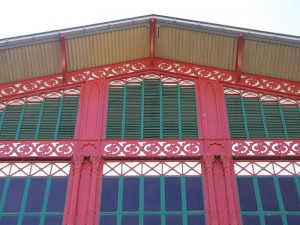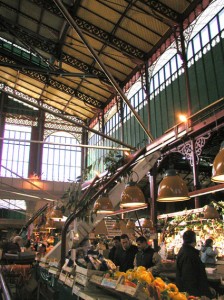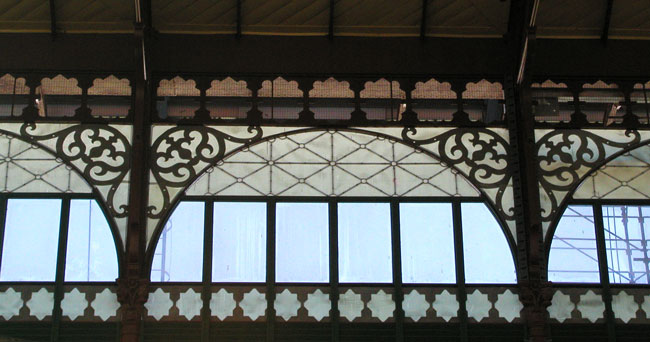La costruzione del Mercato Centrale rientra in un progetto di trasformazione dell’antico centro cittadino avvenuta intorno all’ultimo quarto del XIX secolo.
 The Mercato Centrale was built as part of a wider project for the transformation of the ancient city centre carried out in the last quarter of the nineteenth century.
The Mercato Centrale was built as part of a wider project for the transformation of the ancient city centre carried out in the last quarter of the nineteenth century.
In 1864 it was decreed that a market was to be built in the area of San Lorenzo, an unhealthy part of town filled with back alleys and small houses known as the “Camaldoli di San Lorenzo”.
The final project was the work of the architect Giuseppe Mengoni and the structure was built following the most updated architectural technologies, combining iron and brickwork, as well as creating a revolutionary idea of space through the use of closing elements in wood for air vents and in glass for lighting.
In those days the building was divided into three naves, with a maximum height of nearly 30 metres, and housed 511 shops.
 The internal layout of the market was completely changed in 1881 ? the number of stalls was reduced and blocks were laid out in the scheme that may still be seen nowadays.
The internal layout of the market was completely changed in 1881 ? the number of stalls was reduced and blocks were laid out in the scheme that may still be seen nowadays.
The new market was welcomed enthusiastically by nineteenth-century newspapers, as in the following outburst of civic pride: “For its comfort and magnificence, Florence’s Mercato Centrale will be unmatched in any other part of Italy”.
In its beautiful two-storey structure you will be impressed by the rich selection of groceries and delicatessen, fresh traditional products, with flavours linked to the rich and genuine local cuisine.
On the first floor you will find stalls specializing in cheese, meat, fish and cured meats; while the stall on the second floor sell fresh and dried fruit, vegetables, flowers and spices.
And you can have a pleasant rest and a nice chat in the several bars and small restaurants.
The impact with a retailer offering a vast range of cheese types may initially cause problems to the less experienced customer. But, with a few handy hints, the choice among the many different products may turn out to be easier than imagined.
The extreme variety of colours, crusts, textures, aromas and flavours is in itself the distinctive sign of a typical product. And within this variety you may also choose simply on the basis of your instinct and preference: further help will be on hand from the professional expertise of cheese-sellers specialized in selecting and refining. If you ask the right questions, they will put at your disposal their unsurpassed knowledge of the places of origin, the cheese-makers, the dairy cattle and preparation techniques which forms the most important part of their professional skills. However, the characteristics you have to be most careful about when asking information on cheese are the following:- its area of provenance (it must never be too generic) – if it is a mountain area, whether it comes from free-range cows or a dairy farm – the type of milk used (fresh, pasteurised, cow’s, sheep’s, goat’s or mixed milk, full fat or skimmed) – the length of the maturing period. These variables can indicate a higher or lower level of effort and care on the cheese-maker’s, and possibly the maturer’s, part. As a result, they greatly influence prices: it is wrong to assume that there are no differences, not even remarkable ones, within the same category of cheese.



